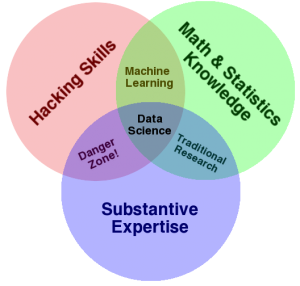Two weeks ago the Federal Member for Melbourne, Adam Bandt, gave a public lecture on the role of evidence in public policy in Australia. I helped to organise this talk as one of the monthly events for SSA Vic. Our goal was to hear how evidence is used (or not) by decision makers, in this case politicians.
Adam’s covered many topics and fielded a large number of questions from the audience. You can listen to the recording to hear it all (approx. 1 hour). Here, I summarise the points that stood out for me.
Lessons learnt from climate change policy
Climate change featured prominently in both Adam’s talk and the audience’s questions. As part of his role in the previous government, Adam was frank in describing both their successes and failures. Two of these stuck with me.
Early on, the government put together a committee to develop a set of policies to tackle climate change. It consisted of parliamentarians from multiple parties, and an equal number of experts from a variety of fields. Adam said the presence of the experts changed the dynamic of discussion considerably:
‘When you are sitting across the table from an expert…your ability to prosecute crap arguments diminishes drastically. You’ll be held to account very, very quickly by someone who’ll just tell you that’s simply not right.’
Seems like a great idea to me. Getting politicians and experts talking together, surely it’s a no brainer? Shouldn’t this happen more often?
On the other end, one of their major mistakes started once they had developed their policy and passed the legislation. They presumed there was no longer any need to talk about the problem. The public information campaign that followed concentrated on details of the carbon price and the compensation package, with little mention of global warming or the fact that this legislation is tackling a big social problem.
‘The failing to talk about the problem, and just presuming because you have a good technocratic fix to it then that’s enough, is part of the problem,’ according to Adam. This allowed the Opposition to shift the debate to be about something other than the underlying problem, to a debate about the Government’s credibility, without any reference to climate change.
Adam’s 3-step plan
Often it’s easy to point out problems but much harder to come up with solutions. Adam offered us three.
1. Entrench facts into government decision making, by law
Adam suggested two ways of doing this. Firstly, by setting up a sustainability commissioner in various government departments, whose role is to provide independent scientific advice (for example, about the impacts on biodiversity or energy use). The key point is that the relevant minister would be required, by law, to take that advice into account. Of course, they could chose to ‘ignore’ any advice but they would need to make a statement to this effect. Adam believes this would change the dynamic of many decisions and make evidence harder to ignore.
Secondly, an increased use of randomised controlled trials (RCTs) as part of policy development. However, Adam was a bit reserved on this point, wanting to see more evidence that these are indeed effective. He mentioned that a large review was underway in the UK to assess the ability of RCTs at measuring the effects of social policy.
2. Increase the scientific literacy of the population through public education
Those who wish to attack evidence-based positions can resort to variety of underhanded tactics. One is to manufacture doubt. Another is to falsely undermine the evidence by blurring the distinction between evidence and moral values.
Adam believes that increasing scientific literacy can help to blunt both of these attacks, and also lead to increased acceptance for a greater role for evidence in decisions. He would do this by investing more in science and mathematics education in primary and secondary schools.
A byproduct of such an education would be a greater ability by the public to distinguish between the use of evidence versus the use of values to guide decisions. Hopefully, this will lead us to a situation where politicians would be allowed (in fact, compelled) to change their policies in response to new evidence without being falsely accused of ‘flip-flopping’.
3. Get scientists & researchers to be more political
Adam’s final message was directed squarely at us, the scientists and researchers in the audience. Unless we fight for our slice of the political pie, according to Adam, it will be instead taken by those (of which there are many) who are motivated by self-interest and not necessarily the evidence.
One way to get political is to (like Adam) leave our jobs and stand for election. It would be great to have a few more scientists in Parliament, but that won’t be enough nor is it a realistic prospect for most of us.
Instead, Adam urged us to get organised and pool our efforts. Some of us will need to go out in public and advocate on behalf of scientists. We will also need an effective campaigning organisation. (Adam mentioned the Australian Academy of Science but noted that it acts more as an advisory body than as a campaigning organisation.) Comparing our plight with that of the mining industry, which collectively ran a multi-million dollar advertising campaign against the mining tax, Adam asked, ‘Where is the alternative, equivalent organisation…[who will] run a TV advertising campaign for science & research?’
The question of money arose. Adam admitted that this is indeed a challenge. However, a surmountable one. He said we need to find ‘allies’ out there who have an interest in Australia being a well-resourced, research & science community. There are many of them around and they are just waiting to be pulled together.


